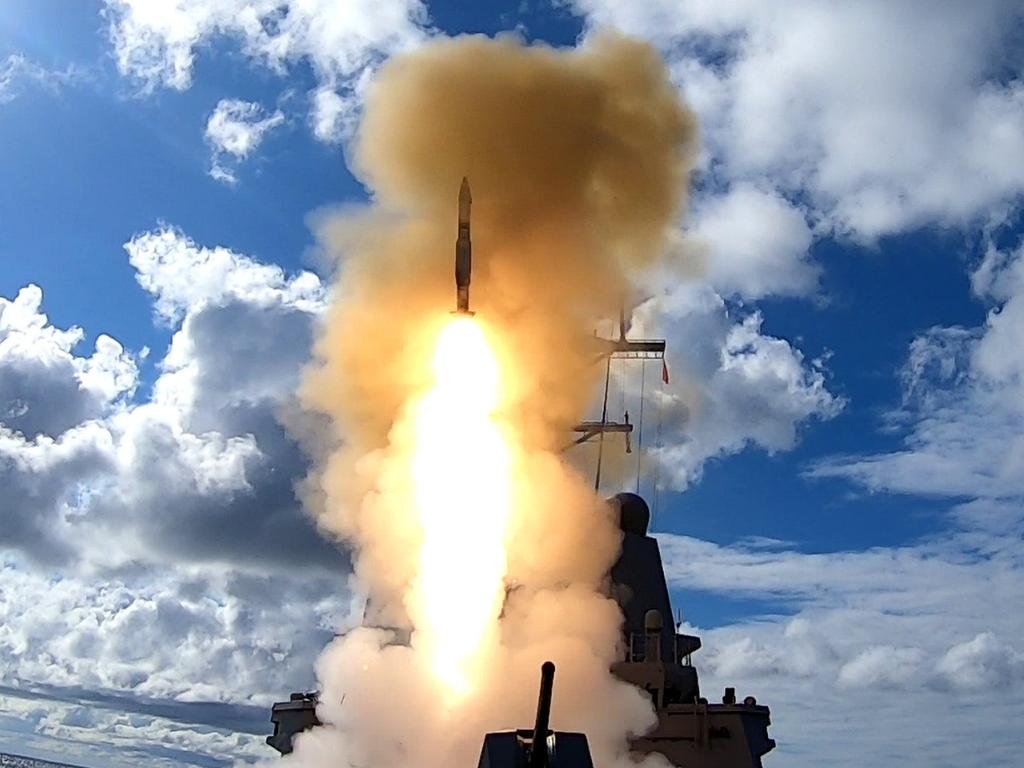We’ll build bespoke boats, says submarines project chief
‘We have started our design process afresh and our Attack class is a different submarine,’ says Australia’s program chief.

More than 400 people are now working on delivery of the Royal Australian Navy’s Attack-class submarine, a reminder that the replacement for the in-service Collins-class fleet is a fresh start and not a conventionally powered modification of the French nuclear-powered Barracuda class.
This assumption is something that Rear Admiral Greg Sammut is at pains to correct. Sammut was recently promoted to oversee both the Future Submarine (Sea 1000) and Collins-class programs as general manager submarines within the Defence Department’s Capability and Sustainment Group (CASG).
“While we can leverage a lot of the lineage from the Barracuda, we have started our design process afresh and our Attack class is a different submarine,” he says.
“We can use the calculations they’ve used in terms of understanding the performance of structures but that’s no different to what any other submarine designer does,’’ Sammut says. “You use your last reference point as you start your next design because that last reference point is a known quantity and helps you to make choices about how the design can evolve safely to meet emerging requirements.”
As of October more than 400 personnel, including 40 Australians, were working with French designer and shipbuilder Naval Group in Cherbourg on the Attack class’s preliminary design.
A further 220 staff in the CASG Future Submarine program office were involved not only in overseeing design activities but also in development of the new Osborne North submarine construction yard in northern Adelaide, procurement, and preparations for training and technology transfers into Australia as the program progresses.
A system requirements review later this year is intended to confirm the design remains balanced as it is developed to meet more operational requirements progressively. The traceability of operational requirements to the evolving system and subsystem specifications will also be reviewed.
This takes into account the sizing of the Future Submarine — a length of about 95m, diameter of about 8m, and a dived displacement of about 5000 tonnes.

“At this stage we have a layout of where the major critical equipments go, how accommodation is being planned throughout the boat, and the location of main compartments. This includes locations of the main storage battery, where the main motor will sit, and general arrangements for the weapon discharge system and so on,” Sammut says.
“We’ve also established the space and weight allowance as well as the cooling and power allocation for combat system components in the boat.”
The review will confirm the ability to link navy requirements down into specifications not just for the submarine as a whole but for critical systems and sub-systems.
“It doesn’t mean that all equipment has to be defined completely in terms of specifications, but its performance characteristics need to be understood so that when we go to market to source things like hydraulic pumps or exhaust valves, industry has an understanding of what they would be required to produce,” the rear admiral says.
A systems functional review in the first quarter of 2021 will define the layouts for all the major items of equipment.
Preliminary design will continue into 2022, building up the description of each part of the boat and filling compartments and spaces in a design sense with the equipment that will be placed in them.
At this point the first-of-type will have been defined, and no changes to equipment or requirements that would affect the balanced design produced to that point will be permitted.
The subsequent process will design systems in detail and develop the work instructions for production of the first of the Attack class, which will commence from 2023-24. Relatively mature technologies are being introduced to de-risk the performance of the Attack class, including using proven lead-acid batteries rather than battery technologies still in development.
“We still don’t believe that lithium-ion technology and light- metal batteries are at sufficient maturity for our applications given the risks you have to manage for the lithium-ion battery,” Sammut says.
“That doesn’t mean though that there aren’t other technologies out there that might provide better performance than lead-acid and could be back-fitted and we’re considering some of those as well,’’ he says.
“Nickel-zinc is such a technology that we’re working on with industry and determining how that may have applications not only in the Attack class but potentially in the Collins class [sustainment] as well.”
Options for sonar arrays, periscopes, optronics and other elements of the Attack-class combat system are currently being assessed by Lockheed Martin Australia in its role as combat-system integrator.
Details of the combat-system physical integration facility, which will be located at the under-construction submarine yard at the Osborne North naval shipyard, are now being finalised.
Both it and the land-based propulsion test site should be completed by 2022, providing time for prototyping and testing well in advance of the assembly of those systems in the first of the Attack class.
The rafts that will support these systems will commence production two to three years after the start of hull production. The nominal construction schedule is a drumbeat of one boat every two years, with three boats in build at any one time, with the first due in service in about 2032. This means the 12th and final boat would be delivered about 2050, Sammut confirms.
“What we want to establish is a continuous shipbuilding program that voids valleys of inactivity when there is nothing to do because you haven’t got anything to design or anything to build.”






To join the conversation, please log in. Don't have an account? Register
Join the conversation, you are commenting as Logout